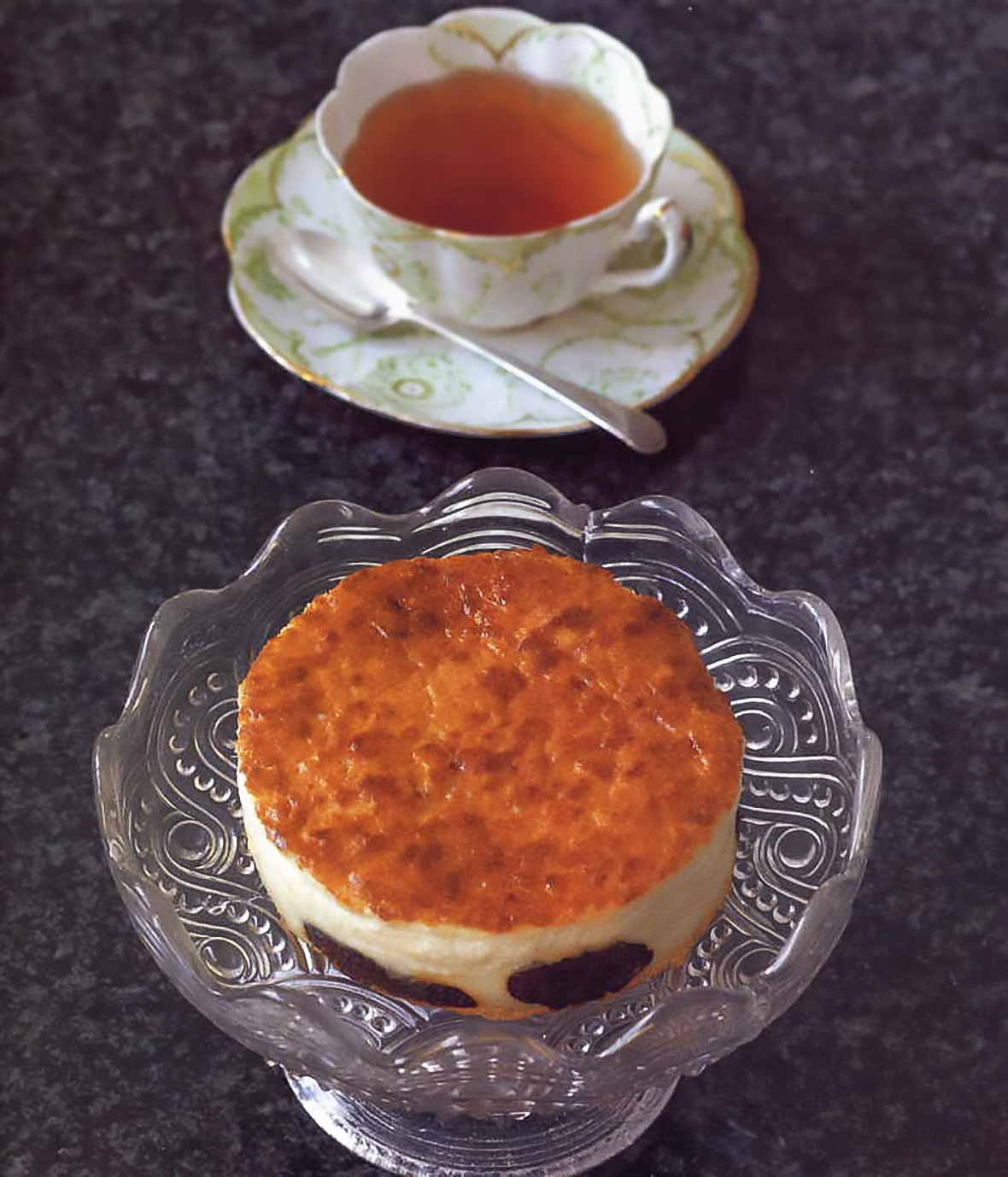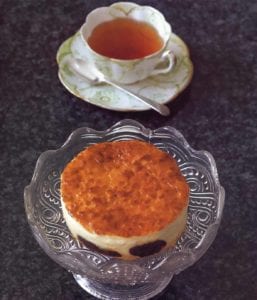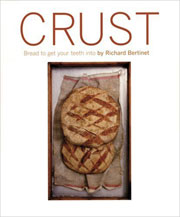
According to baker and cookbook author Richard Bertinet, the custardy, clafouti-like cake known as Far Breton was originally favored by farm workers who took it into the fields as lunch. We wouldn’t mind physical labor if it came with this sweet something gilded with rum-soaked prunes. We wouldn’t mind at all.–Renee Schettler Rossi

Far Breton ~ French Custard Cake
Ingredients
- 14 ounces prunes, pitted
- A scant 1/4 cup Armagnac, rum, or other brandy
- 3 1/2 tablespoons unsalted butter, melted, for the baking dish
- 2/3 cup granulated sugar
- 8 ounces (shelled weight) egg, roughly equivalent to 4 large eggs
- 4 ounces (3/4 to 1 cup) all-purpose flour
- Pinch of salt
- 3 cups plus 3 tablespoons whole milk, cold
Instructions
- At least a few hours and preferably the night before you intend to bake the cake, soak the prunes in the Armagnac.
- Preheat the oven to 425°F (220°C). Reach for a deep-sided 8-by-10-inch (or equivalent size oval) baking dish. Brush the dish with the melted butter.
- In a bowl, combine the sugar and eggs and then gradually add the flour, mixing just until combined, and then stir in the salt. Slowly and gradually whisk in the cold milk to make a thin batter.
- Spoon the soaked prunes and a little of the syrupy liquid that remains into the buttered dish. Place it in the oven for just a few minutes to warm the prunes. Remove the baking dish from the oven and pour in the batter. Bake for 10 minutes. Then reduce the oven to 350°F (180°C) and bake for 25 to 45 minutes more, depending on the size of your baking dish.
- To check that the Far Breton is ready, dip the blade of a sharp knife into cold water and use it to pierce the middle—if the knife comes out clean, it is ready. The sides of the far breton will also be starting to come away from the dish. Cool completely in the dish and, if desired, cover and refrigerate overnight before slicing and serving, preferably with a cup of tea.

Explore More with AI
Nutrition
Nutrition information is automatically calculated, so should only be used as an approximation.
Recipe Testers’ Reviews
This custard cake is delicate and subtle and slices like a dream. One taster loved it with good tea. Others wanted a cookie or a crust to go with it. The prune layer reminded some of us of the caramel on a flan.
We soaked the prunes overnight at room temperature. The next day there was very little liquid left and the liquid had turned syrupy—the fragrance was divine and we added the prunes and a little syrup to the pan over the melted butter.
We followed the gram measurements exactly with one exception: we used 750 ml plus 3 T of milk. The batter comes together quickly and easily.
Be sure to use a deep dish. We used an extra deep 9-inch pie pan, thinking it would be deep enough, but it was not! We quickly buttered 3 ramekins and filled each 2/3 with the extra batter. Next time, we’ll use a cheesecake pan with the bottom outside reenforced with foil.
It’s even better if you can allow 24 hours for it to chill
The texture was very smooth and flan-like with moist, Cognac-infused prunes.
I used my 8-by-10-inch Emile Henry oval baking dish for this test, however, after filling my dish to the brim with the batter, I still ended up with 1 cup leftover batter in my bowl. The photo looks like it was made in a springform pan, which would be deep enough to accommodate this amount of batter. Alternatively, a 9-by-13-inch baking dish would also be an appropriate option.
![Two pictures of a far Breton, a French custard cake with prunes, one photo is of a the far Breton in a casserole, the other ] is of a slice](https://leitesculinaria.com/wp-content/uploads/2018/09/far-breton-tester.jpg)
I soaked the prunes for 5 hours in Cognac (they definitely soaked up the liquid, and I guess heating them up a bit further infused them with the flavor of their soaking liquid. My batter was very thin, like the consistency of an egg and milk mixture used for French toast. I didn’t need to add additional milk to the batter.
It took 50 minutes baking at the lower temp before my knife came out clean. I let it cool completely in the pan and the slices released cleanly and easily from the dish.
Generally, prunes are not my first go-to ingredient for a dessert, so my friends and I were pleasantly surprised to find that we enjoyed this dessert. The custard was a wonderful thick consistency that held its own against the somewhat chewy texture of the prunes. The edges of the custard formed a bit of a crust that provided a combination of three delightful textures: the smooth custard, the chewy prunes, and the drier edge.
Much of the conversation about the dessert revolved around other fruits we thought would work well. Candidates were raspberries, black raspberries, kiwi, blueberries and apricots, any of which we thought might be delicious. If I were to make it again, I might cut back the prunes to 9 ounces from the 14 ounces specified. This would allow the custard to shine through a bit more.
The ratio of the egg, sugar, and flour to the milk made a perfect thin consistency. I needed to cook the custard cake for 45 minutes to have my wet knife come out clean in the middle of the cake. When I took the cake out of the oven to cool, I immediately ran my knife around the edge of the baking dish to loosen it.












I know I not supposed to comment without making the recipes, but I cannot comply with this one! OMG! This is the perfect dessert in the middle of a snowstorm on a dark Alaskan night! With the Northern Lights swirling around us…we will be eating this in deep bowls while sipping the same brandy. Thanks for this.
Andi! You can absolutely comment on a recipe you haven’t made. We just ask you refrain from rating it until after you’ve dined! I wish you a delicious Alaskan winter!
We really like the Far Breton, it has become a regular. Friends have also adopted it. Very easy to make, always successful. I use the metric measurements:-
400g prunes
50g rum
130g caster sugar
4 eggs
110g plain flour
A pinch of salt
750g cold full-fat milk
50g melted butter
21x26cm 8”x10” dish.
Andy, that looks great. And thanks for your version of the recipe!